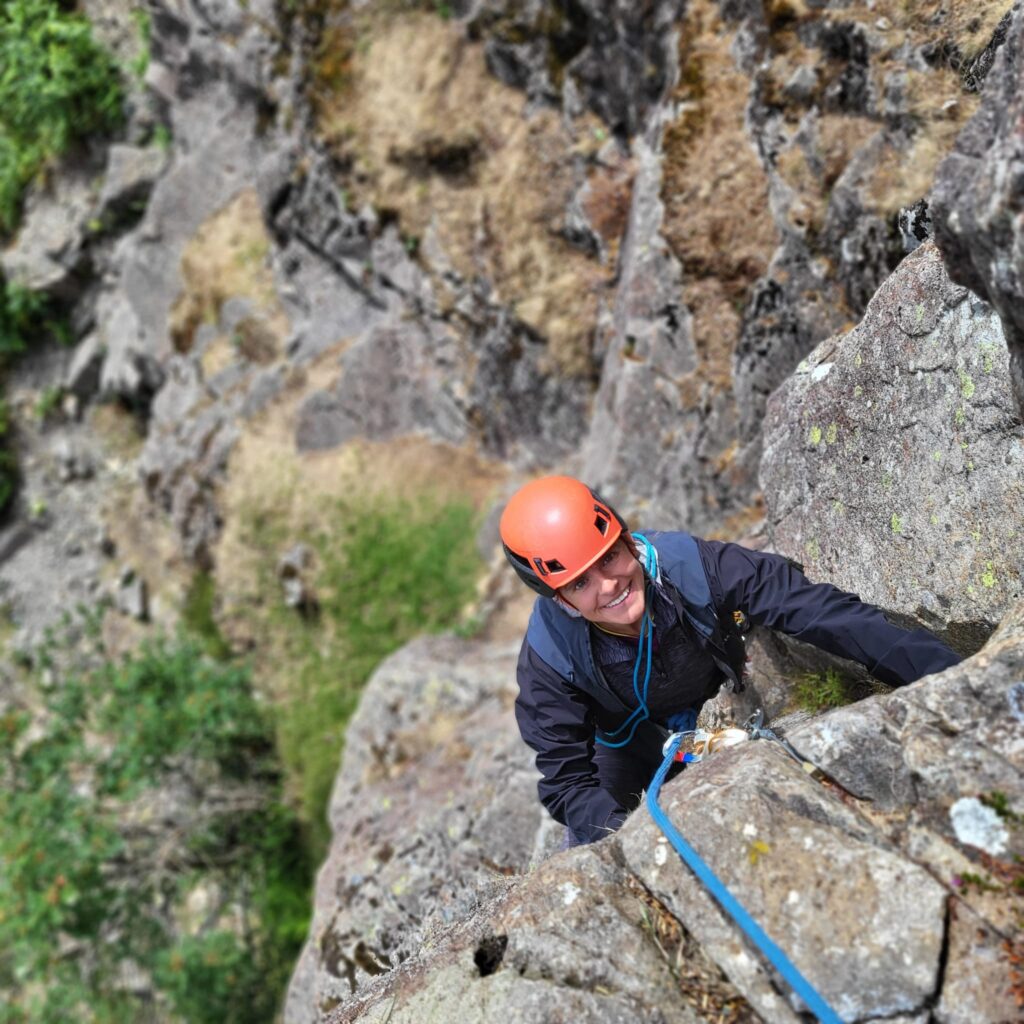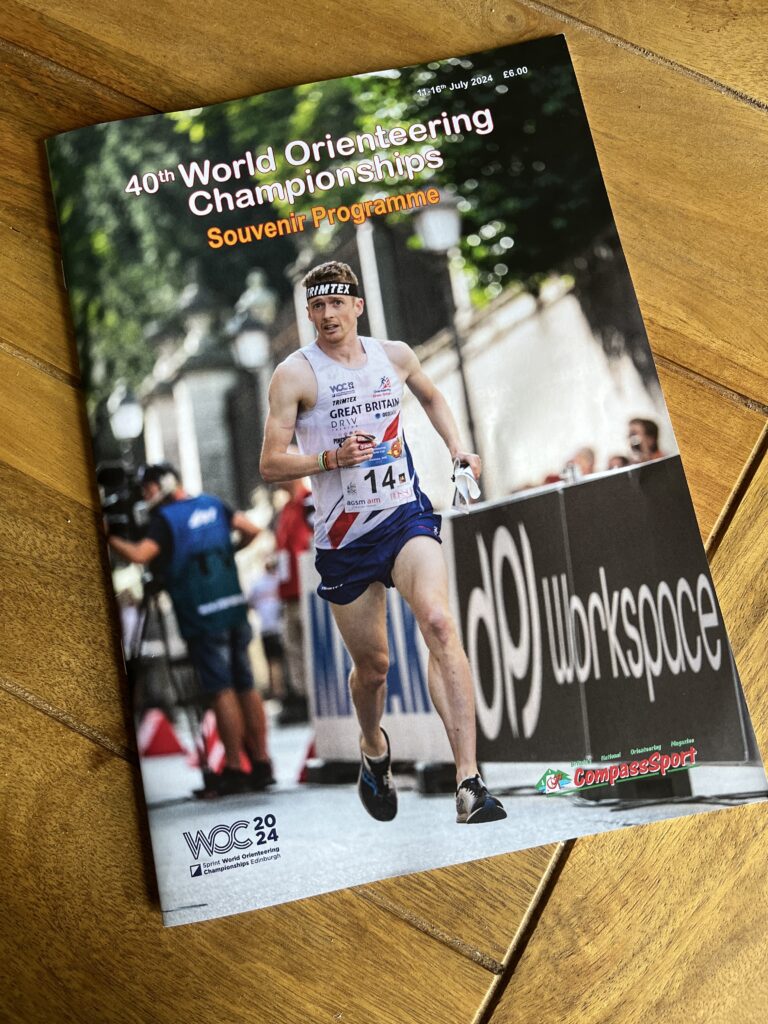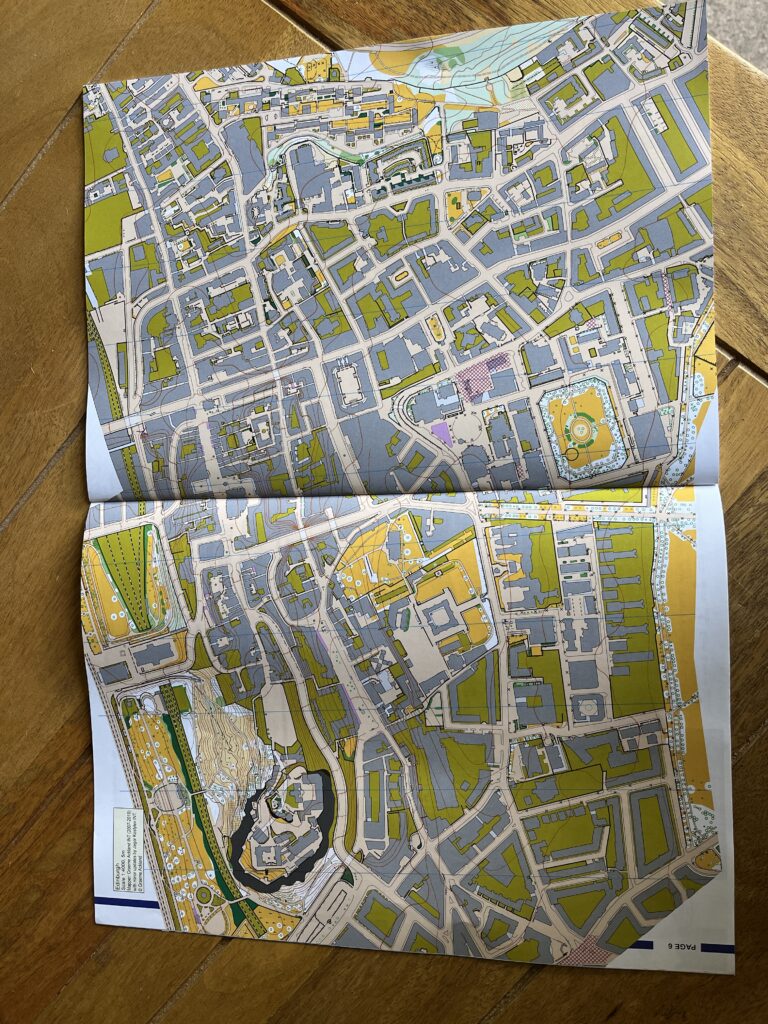I was planning to write a blog post about climbing, and there have been lots of adventures on both sunny and less sunny rock over the past few months, but faced with another day of ‘challenging’ weather yesterday evening, I decided to switch plans and head to a local orienteering event rather than a soggy crag.
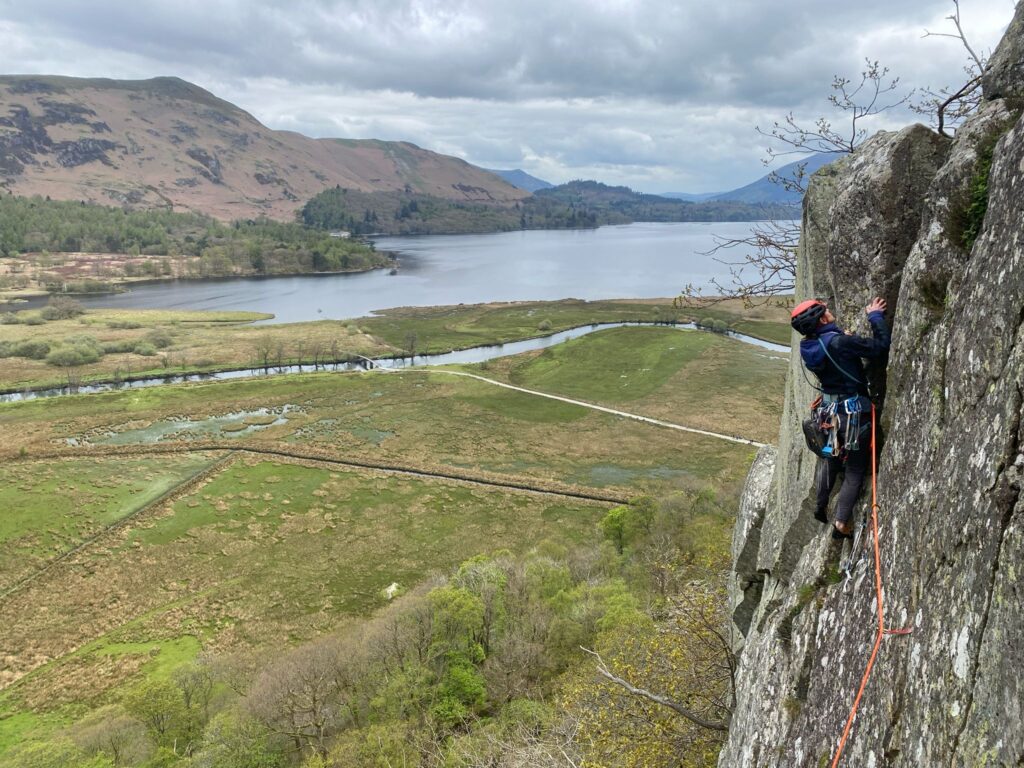
Going orienteering has not been on my radar for several months because working towards my mountaineering and climbing instructor (MCI) qualification and illness/injury (including three bouts of Covid since January!) have meant that running has been on the back burner. However, in that time I have stepped into the role of Performance Pathway Manager for British Orienteering – essentially heading up the British team. With the World Champs taking place in Edinburgh 12-16 July, it was time to remind myself of the challenges that the athletes will face as they stand on the start line next week.
Orienteering events are typically run as a time trial, with people starting every few minutes and heading off into the terrain on their own personal adventure. With no-one watching you, and only the occasional glimpse of other competitors as you run, walk, or tumble through the terrain, it is the perfect way to exercise without really noticing that you are exercising!
Evening events with my local club, Lakeland Orienteering Club, are low-key, friendly, and often fiendishly technical! Your brain is focused on interpreting the map and plotting the route to the next control, rather than worrying about whether you are running fast enough. I frequently finish with a host of mystery scratches and bruises but no recollection of how I acquired them!
This perhaps makes the sport sound a little epic, but courses are planned to cater for all ages and abilities. There is usually an option to enter a course where the controls can be visited by linking up the right footpaths. However, my preference is to enter a course where I am more likely to be leaping across a path than running along it, eyes darting between the map, my compass, and the terrain ahead as I weave between trees in search of the orange and white kite that marks the location of the next control.
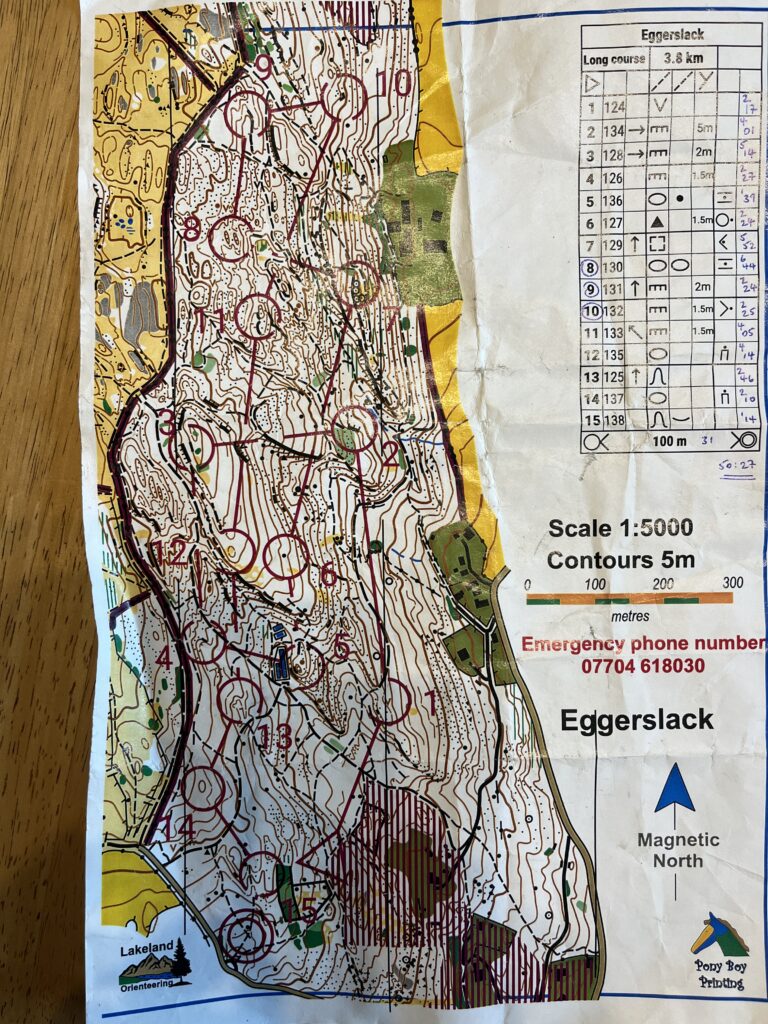
Yesterday’s event did not disappoint. For 50 minutes I was absorbed in staying upright and solving the puzzles set by the course planner. Hands as well as feet came into play multiple times as I flailed up steep slopes and scuttled downhill dodging roots and boulders. Halfway round the course I was aware that I had fallen into the trap of ‘wandering through the forest with no plan’ rather than reading the map. Time to abort! I took a bearing to a wall, re-located, and set off again with a clearer plan, rewarded with the sight of the control nestled between two small hills a few minutes later.
There are lots of parallels between orienteering and climbing. Both will test your mind as well as your body, you don’t need to be particularly fast or strong to enjoy the challenge – there were people aged 8 to 80 at yesterday’s event – and both can be highly addictive!
Next week’s World Championships will break from the traditional mould of forest orienteering, testing high-speed decision-making and physical agility as competitors race through the streets and alleyways of Edinburgh city centre, navigating between up to 20 controls in just over ten minutes of racing! Competitors will carry GPS-trackers allowing us to track them in real-time – do check out the action!
In the meantime, I hope there will be a little sunshine between the showers in the next few days so that I can enjoy my other addictive pastime of puzzling my way up a rock face.
